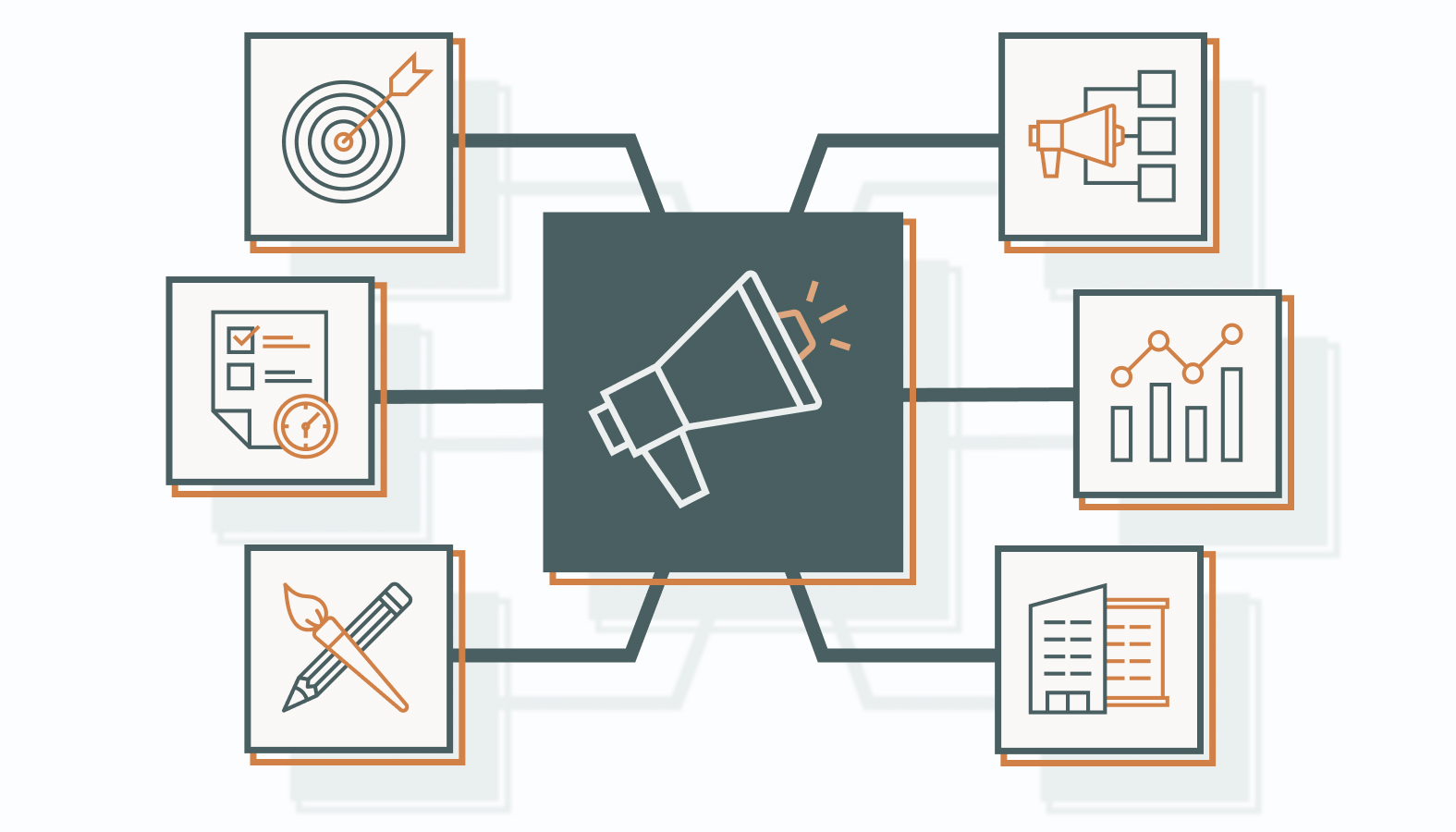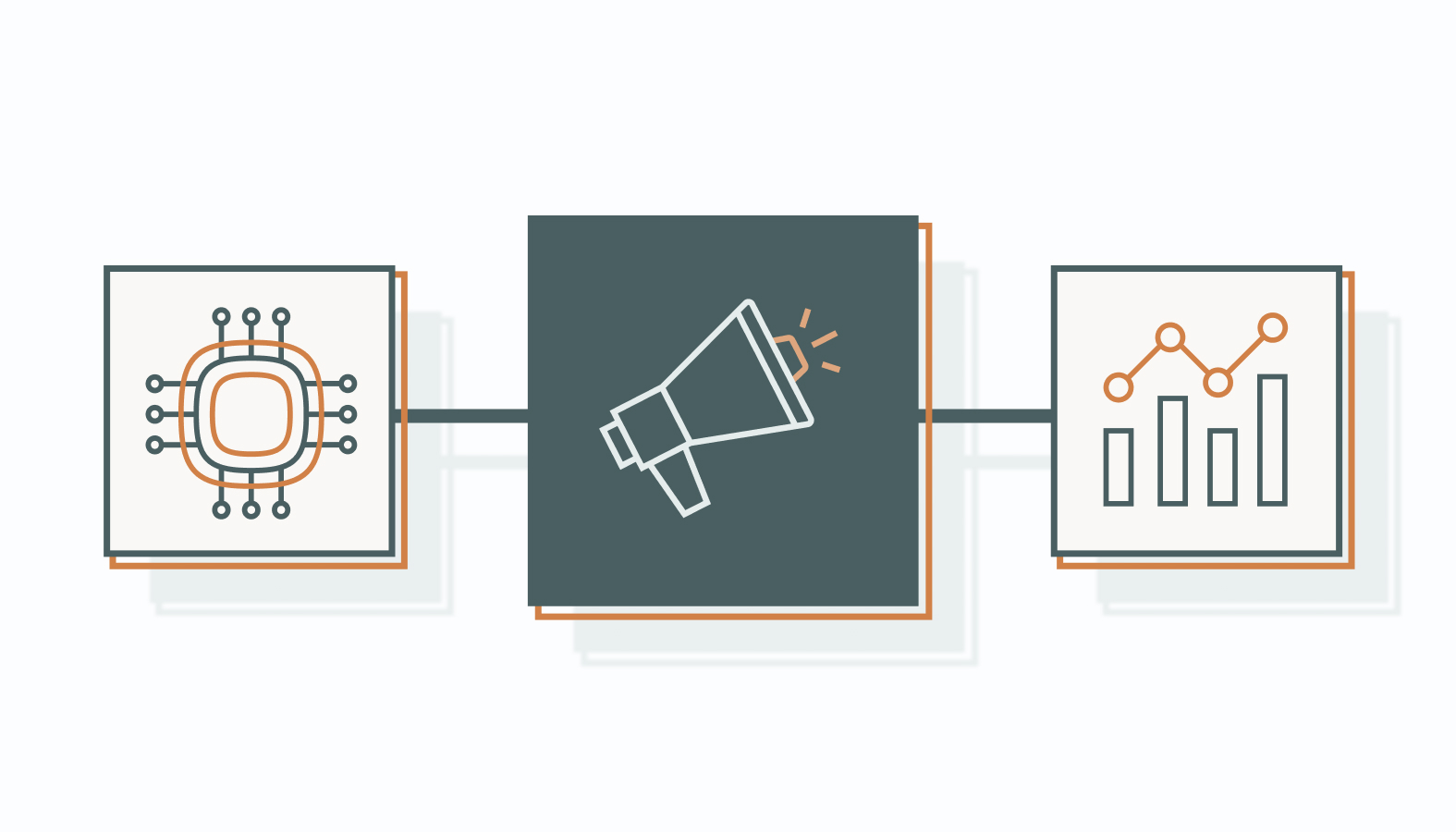B2B marketing isn’t just a game of visibility — it’s a precision exercise. Success demands the right balance of strategy, creativity, and measurable results. Unlike B2C, flashy ads and instant appeal won’t cut it. Your campaigns must speak directly to decision-makers, solve real business challenges, and earn trust over time.
The real challenge? Crafting messages that resonate without sacrificing clarity and delivering them through channels that actually reach your audience.
This guide explores the elements that make B2B campaigns not just eye-catching but high-performing. See how top brands turn insight into action and learn how to apply these lessons to your own campaigns.
Understanding B2B Marketing Campaigns
A B2B marketing campaign is more than a set of ads. It’s a coordinated strategy designed to address real business challenges. These campaigns focus on building credibility, demonstrating expertise, and establishing long-term partnerships with decision-makers. The aim isn’t just to secure a single transaction but to create sustained engagement, strengthen brand authority, and drive measurable growth.
Strong B2B campaigns simplify complex solutions into compelling narratives, guide prospects through longer decision cycles, and position a brand as a trusted partner that delivers value over time.
With the foundation clear, the next question is how B2B campaigns differ from B2C efforts — and why those differences matter when designing strategies that perform.
B2B vs. B2C Marketing: Key Differences
B2B and B2C marketing play entirely different games.
B2C targets emotions and instant appeal. B2B targets logic, ROI, and multiple decision-makers. The sales cycles are longer, content needs are more detailed, and each message must address specific business challenges. That means white papers, case studies, webinars, and tools designed to educate, convince, and build trust.
The channels differ, too. B2B relies on targeted outreach, account-based marketing, and nurturing campaigns, whereas B2C often bets on wide-reaching campaigns that catch attention fast. Messaging is about demonstrating tangible value and showing your audience you understand their world.
Recognizing these distinctions shapes everything, from planning to execution. Effective B2B campaigns don’t just reach an audience; they engage it, earn its confidence, and convert interest into long-term business outcomes.
In short, get this right, and your campaigns persuade, educate, and deliver results.
Elements of a Successful B2B Marketing Campaign
A B2B campaign only succeeds when every piece works in concert. From pinpointing the right audience to fine-tuning strategy, these components ensure your efforts are seen and deliver measurable impact.
Focus on the following essentials to create campaigns that are effective, repeatable, and scalable:
Identifying a Clear Target Audience
Everything starts with knowing exactly who you’re talking to. Misfire here, and the rest of the campaign falls flat.
- Data Collection: Pull insights from existing clients, industry reports, and market research.
- Segmentation: Break prospects into groups by company size, sector, and decision-making roles.
- Persona Mapping: Create detailed buyer profiles reflecting challenges, needs, and priorities.
When your messaging speaks to real business problems, trust forms faster, and your campaign gains traction.
Strategic Planning and Execution
A campaign without a plan is just noise. Strategy converts intent into measurable outcomes.
- Objective Setting: Define clear, measurable goals that align with overarching business targets.
- Resource Allocation: Assign budget, technology, and team responsibilities strategically.
- Timeline Management: Set milestones and checkpoints for each phase of the campaign.
Agility is key. Embed feedback loops to refine tactics and keep the campaign on course.
Creative Campaigns That Capture Attention
Even B2B campaigns need spark. Creativity doesn’t replace logic; it amplifies impact.
- Storytelling: Craft narratives that connect with business priorities and decision-making pain points.
- Visual Assets: Use videos, infographics, and interactive content to clarify complex solutions.
- Emerging Tech: Explore AR, VR, or interactive simulations to make ideas tangible.
When strategy meets creativity, campaigns stick in the audience’s mind and persuade more effectively.
Smart Distribution and Promotion
The best content falls flat if it doesn’t reach the right people. Smart channels turn effort into results.
- Digital Platforms: Targeted email campaigns, social media outreach, and search marketing.
- Content Syndication: Partner with trade publications and industry websites to extend reach.
Precision distribution ensures your message engages decision-makers rather than just filling inboxes.
Performance Measurement and Optimization
If you can’t measure it, you can’t improve it. Metrics illuminate success and uncover gaps.
- Conversion Rates: Track leads that turn into paying clients.
- Engagement Metrics: Monitor clicks, shares, and interactions to gauge resonance.
- ROI Analysis: Compare campaign revenue impact to total spend.
Data-driven refinement keeps campaigns efficient, ensures better allocation of resources, and maximizes impact over time.
Strategic Brand Partnerships
Partnering amplifies reach and credibility. Done right, collaborations create wins that solo campaigns rarely achieve.
- Complementary Brands: Seek partners whose offerings align with your target market.
- Resource Sharing: Combine expertise, tools, and audiences for mutual advantage.
- Joint Campaigns: Collaborate on events, content, or initiatives that elevate both brands.
Strong alliances expand influence, enhance authority, and generate measurable business results beyond individual effort.
Inspiring Examples of B2B Marketing Campaigns
Some B2B campaigns do more than market; they set the bar. They combine strategic insight, creative risk-taking, and precise execution to engage audiences and drive measurable results.
These campaigns demonstrate that smart storytelling, clear value, and memorable experiences can make even complex B2B offerings resonate widely.
Let’s examine examples that turned ideas into impact.
Volvo’s Innovative “Epic Split” Publicity Stunt
Volvo’s campaign with Jean-Claude Van Damme was a masterclass in product storytelling.
Van Damme performing a split between two moving trucks visually communicated the precision and stability of Volvo’s dynamic steering system.
- Execution: High production quality paired with a simple, unmistakable demonstration of product performance.
- Reach: Millions of views, extensive media coverage, and a reinforced reputation for innovation.
Volvo’s approach shows that bold visual concepts, tightly tied to product benefits, can make technical features both understandable and memorable, proving creativity and strategy are not mutually exclusive.
Mailchimp’s Viral “Did You Mean Mailchimp?” Search Engine Campaign
Mailchimp turned a common brand quirk — mispronunciations — into a viral marketing asset.
By creating playful microsites and videos for variants like “MailShrimp” and “KaleLimp,” the campaign cleverly redirected attention while showcasing Mailchimp’s personality.
- Engagement: Humor-driven content captured attention and encouraged sharing.
- Brand Impact: Reinforced approachability and creativity, making the platform more memorable and relatable.
This campaign illustrates that embracing imperfections, when strategically executed, can generate buzz, reinforce identity, and convert playful attention into meaningful engagement.
Cisco’s Sketch Comedy Testimonials
Cisco made technical solutions relatable through sketch comedy.
By infusing humor into client testimonials, the company translated complex products into understandable, engaging stories that resonated with audiences.
- Approach: Humorous, scenario-based videos that clearly explain solutions.
- Effectiveness: Increased viewer retention and comprehension while humanizing Cisco’s brand.
Cisco’s strategy highlights that entertainment, applied thoughtfully, can break through B2B complexity, demonstrating that even highly technical offerings can be presented engagingly and persuasively.
These campaigns demonstrate that B2B marketing thrives when creativity and strategy work in harmony. Bold ideas, paired with clarity and product relevance, can leave lasting impressions, expand reach, and influence even the most discerning decision-makers.
The lesson is clear: B2B doesn’t have to be boring. With the right mix of insight and imagination, campaigns can captivate, convert, and elevate brand perception across the market.
Leveraging Digital Events for Campaign Success
Digital events are now a tactical necessity. They enable B2B marketers to showcase expertise, engage decision-makers, and scale their reach without geographic limits.
When executed strategically, these experiences create immersive moments that stick.
Experiment with Formats That Work
Digital events unlock the flexibility that traditional gatherings can’t match. Choosing the right format turns passive viewers into active participants:
- Virtual Summits: Multi-session events let attendees pick topics that matter most, increasing relevance and retention.
- Interactive Workshops: Hands-on sessions and collaborative exercises drive engagement and learning.
- Gamified Experiences: Challenges, quizzes, and rewards inject energy and motivate participation.
Each format strengthens engagement by giving attendees a reason to act, interact, and remember your brand.
Networking That Actually Works
Engagement isn’t just watching slides — it’s connecting. Digital events succeed when tools and tactics encourage interaction:
- Live Q&A: Real-time dialogue between speakers and attendees builds trust and insight.
- Breakout Rooms: Smaller group discussions allow deeper conversations and networking.
- Social Integration: Platforms like LinkedIn or Twitter amplify discussion and visibility.
The right combination of software and structure keeps attendees engaged long after the event ends.
Add Immersive Tech
Virtual Reality (VR) and Augmented Reality (AR) aren’t gimmicks. They can be used as effective attention magnets. They transform static presentations into interactive experiences, giving your audience something to talk about long after the event ends.
- VR: Simulated environments let participants explore facilities, test products, or walk through complex processes in a controlled, virtual space. This hands-on approach creates a sense of presence and engagement that slides and videos alone can’t achieve.
Imagine giving prospects a virtual tour of your manufacturing floor or letting them “try out” your latest software, without leaving their office.
- AR: Augmented overlays bring digital layers to real-world views. Charts, product specifications, or interactive visual cues can appear right on attendees’ screens, turning passive observation into active interaction.
AR also encourages participants to explore content at their own pace, making key information more memorable.
These technologies signal innovation, communicate that your company is forward-thinking, and create an experience that’s both educational and memorable.
Using VR and AR strategically positions your brand as cutting-edge, elevating perception while leaving a lasting impression on attendees.
Webinars and Live Streaming Done Right
Cost-effective, scalable, and interactive, webinars and live streams remain core B2B tools. Key advantages include:
- Accessibility: No travel, no barriers.
- Affordability: High reach, low cost.
- Interactivity: Polls, chat, and Q&A drive engagement in real time.
Success comes from relevant topics, authoritative speakers, and polished production. Promotion beforehand and follow-ups afterward maximize reach and impact.
Digital events are strategic accelerators. Done well, they foster connections, demonstrate authority, and convert engagement into measurable business growth. The takeaway: treat them like campaigns, not presentations, and they’ll pay dividends.
The Future of B2B Marketing Campaigns
B2B marketing is entering a new era. The digital landscape keeps shifting, and the brands that thrive are the ones anticipating the next move. Success now demands precision, speed, and a willingness to leverage technology without losing sight of strategy.
The Role of AI and Automation
Artificial Intelligence (AI) and automation are strategic weapons. They streamline repetitive tasks, analyze massive datasets, and surface insights that human teams could take weeks to uncover.
- Process Efficiency: Automation handles emails, lead scoring, and data management, freeing your team for strategy and creative problem-solving.
- Predictive Power: AI can forecast client behaviors, optimize messaging, and tailor campaigns with pinpoint accuracy.
- Implementation Reality: High impact comes with complexity. Integrating these tools requires the right infrastructure, skilled talent, and a strict focus on data security.
When executed properly, AI and automation improves efficiency and gives marketers a competitive edge.
Personalization and Data-Driven Marketing
Generic messaging is dead. Personalization is the engine that drives engagement, trust, and conversion.
- Targeted Communication: Tailored campaigns address each client’s challenges and goals, creating relevance and credibility.
- Data-Driven Decisions: Behavioral patterns, purchase history, and engagement metrics inform smarter segmentation and timing.
- Strategic Precision: The right message, consistently delivered through the right channel, at the right moment, makes the difference between a prospect noticing you and becoming a partner.
Personalization defines effective B2B relationships in modern marketing, especially in a market where every decision is carefully considered.
The Takeaway: B2B marketing is evolving rapidly. Technology, data, and personalization form the foundation of campaigns that capture attention and deliver measurable results.
Marketers who embrace AI, automation, and insight-driven personalization position their brands as leaders and set new benchmarks for the industry.
Elevating B2B Marketing Campaigns to New Heights
Effective B2B campaigns thrive at the intersection of strategy, creativity, and precise execution. Each element of the campaign works in concert to drive growth and strengthen market position.
Key Principles for High-Impact B2B Campaigns:
- Know Your Audience Deeply: Insight-driven targeting lets you speak directly to the decision-makers’ priorities and pain points.
- Strategy Guides Action: Clear objectives and structured planning turn creative ideas into measurable business results.
- Creativity Amplifies Impact: Smart storytelling, visuals, and interactive elements make campaigns memorable and persuasive.
- Precision Distribution Matters: The right message, delivered through the right channels, reaches prospects when it counts most.
- Data-Driven Optimization: Continuous measurement and refinement ensure campaigns remain effective and ROI-positive.
- Embrace Technology Boldly: AI, automation, and emerging tech enhance efficiency and give your campaigns a competitive edge.
- Adapt and Innovate Continuously: Flexible, forward-thinking teams stay ahead of market shifts and evolving expectations.
Marketers who embrace these practices don’t just execute campaigns—they craft experiences that engage, convert, and elevate the brand.
Take Your B2B Marketing Further
You’ve seen what makes campaigns succeed. Now see how these strategies can drive growth for your business.
Connect with our team for a focused, insightful conversation. We’ll identify opportunities to sharpen your strategy, amplify your campaigns, and deliver measurable results.









